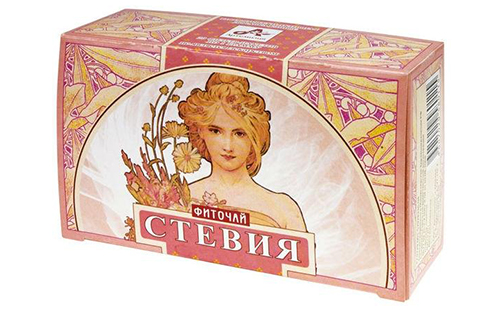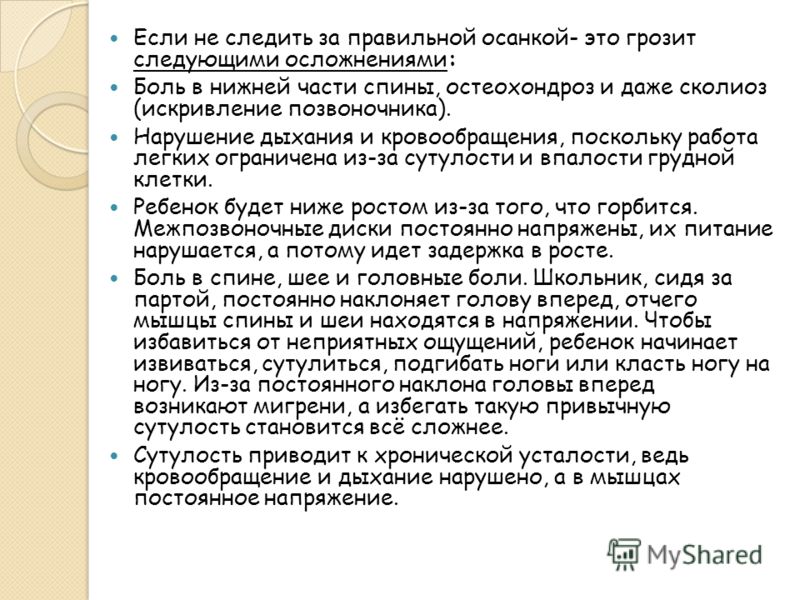Stevia sweetener: the role of honey grass in medicine and cooking
In terms of its sweetness, the plant surpasses sugar by 15-20 times, shocking everyone with its low calorie content - 100 g of the product contains only 18 kcal. Such characteristics are not inherent in all types of plants. To replace sugar and for preventive purposes, honey stevia is used. The remaining subspecies growing in natural conditions are not so valuable, because they contain natural sweet substances in too small quantities.
Plant features
Stevia is a lover of heat and dry climate, therefore it grows in subtropical latitudes. The homeland of the plant is considered to be South and Central America (Brazil, Paraguay). It grows in semi-arid conditions, both in the highlands and on the plains. Stevia seeds have very poor germination, so it is propagated vegetatively.
Due to its excellent taste, as well as high antioxidant abilities, stevia is actively cultivated by eastern countries - Japan, China, Indonesia, and Thailand. Breeding and selection of new sweet species are carried out in Ukraine, Israel, and the USA.
It is also popular to grow stevia at home as a houseplant. After wintering, the grass is planted in open ground. Over the summer, a small bush grows beautifully, allowing you to collect an impressive crop of sweet leaves.
Botanical description
Stevia is a herbaceous perennial bush, formed as a result of active branching of the main stems. Its height can reach 120 cm. Under adverse climatic conditions, stevia does not branch and grows like a grass with a thick stem about 60 cm long.
- root system. Long and even cord-like roots form a fibrous stevia rooting system, penetrating deep into the soil up to 40 cm.
- stems. Lateral branches extend from the main stem. The shape is cylindrical. Active branching forms a voluminous bush of a trapezoid shape.
- Leaves . 2-3 cm long, have an obovate shape and a slightly crenate edge. Dense in structure, the leaves do not have stipules, sit on a shortened petiole. The placement is cross-opposite.
- Flowers. Stevia flowers are white, small, collected 5-7 pieces in small baskets.
- Fruits. During the fruiting period, small boxes appear on the bushes, spindle-shaped seeds 1-2 mm long spill out of them.
When growing a plant in room conditions, to form a bush, it is necessary to regularly cut off the tops of the stems.
Procurement of raw materials
Stevia leaves are used as a medicinal raw material and natural sweetener. They are harvested before flowering, when buds appear on the shoots of the plant. It is at this time that the concentration of sweet substances in the leaves becomes maximum.
To harvest the leaves, the stems of the plant are cut off, retreating 10 cm from the ground. After cutting, the lower leaves are torn off, and the stems are laid out on a cotton fabric in a thin layer or hung tied up in small panicles.
Stevia should be dried in the shade, with good ventilation. In hot weather, the stems dry out completely in 10 hours, which ensures the high quality of plant materials. To maintain the maximum concentration of steviol glycosides, it is recommended to harvest the plant using dryers.
The quality of dried leaves and their sweetness depend on the drying time. At high humidity and low temperature conditions, this leads to the loss of 1/3 of the total amount of steviols in 3 days.
After complete drying, the leaves are removed from the stems, packed in paper or plastic bags. Low humidity and good ventilation allow raw materials to be stored for 2 years.
At the time of discovery, stevia became not only the leader in the content of sweet substances, but also the plant with the greatest antioxidant effect. The complex chemical composition will help preserve youth, neutralize the influence of negative exogenous factors, and restore the functioning of damaged cells. The plant contains a variety of biologically active substances.
The chemical composition of the plant allows it to be used for therapeutic and prophylactic purposes, as a remedy with versatile pharmacological properties:
- it is a source of vitamins and microelements;
- blood pressure stabilizer;
- immunomodulatory agent;
- plant with antitoxic properties;
- hypoglycemic agent;
- plant with antimicrobial effect.
The high concentration of glycosides allows the plant to be used as a sweetener and industrially processed to produce sweeteners. Small doses of stevia give foods a sweet taste, rich infusions and decoctions have a bitter aftertaste due to the increased concentration of steviol glycosides.
The benefits of stevia for different body systems
The beneficial properties of stevia are actively used by traditional and folk medicine, for the treatment and prevention of many diseases.
Cardiovascular
Stevia is able to regulate blood pressure. Small doses help to reduce it. High doses, on the contrary, stimulate an increase in pressure. The mild, gradual action of the plant is completely safe for hypo- and hypertensive patients. Also, the property of stevia has been proven to normalize the heart rate and the strength of heart contractions. A positive effect on the vessels allows you to eliminate congestion, spasm, and normalize the tone of the venous walls. The herb reduces the concentration of bad cholesterol in the blood, helps to eliminate the plaques formed on the walls of the arteries. The plant can be regularly consumed internally for the treatment and prevention of:
- vegetovascular dystonia;
- ischemic heart disease;
- hypertension;
- myocardial infarction;
- atherosclerosis;
- varicose veins.
With fluctuations in blood pressure and its sharp jumps, dose selection should be very careful. The focus is on the well-being of the patient.
Endocrine
The most common use of stevia leaves is to normalize blood glucose levels in diabetes mellitus. The effect is due to inhibition of glucose absorption. Against the background of the use of stevia, diabetics note an improvement in well-being, as well as a decrease in the need for insulin from outside. With the constant use of the plant, the dosage of the hormone is gradually reduced.
The herb is able to restore the work of pancreatic cells. In some cases of type 2 diabetes, there is a complete recovery after the use of stevia.
The plant improves the production of thyroid hormones, normalizes the level of sex hormones. Macro- and microelements necessary for hormonal synthesis, normal functioning of the endocrine system are contained in the leaves of the plant.
immune
Vitamins and macronutrients that are part of stevia activate the body's defenses. This is useful when immunity is reduced due to previous diseases, during the cold season. The ability of stevia to eliminate the reactive response of the immune system to allergens entering the body is known. This effect is necessary for allergic reactions such as urticaria and dermatitis, as well as for the treatment and prevention of the following autoimmune skin diseases:
- psoriasis;
- eczema;
- idiopathic dermatitis;
- seborrhea.
The antitumor effect of stevia is based on the ability of the plant to neutralize and eliminate free radicals. The same mechanism underlies the slowing down of the aging process by grass. The antimicrobial and antifungal properties of stevia help in the treatment of wounds, including weeping, purulent, trophic ulcers, and fungal skin lesions.
digestive
Stevia has a beneficial effect on all digestive organs. The plant normalizes the secretion of digestive juices and acidity in the stomach, improving the absorption of food. Enveloping properties are useful for gastritis and peptic ulcer disease.
The use of stevia is recommended for weight loss. In the fight against obesity, not only the ability of the plant to replace sugar, reducing the calorie content of food consumed, but also to prevent the occurrence of insulin surges, the cause of sudden and severe bouts of hunger, is appropriate.
nervous
Stevia restores the functioning of nerve fibers, normalizes the conduction of impulses through them. The plant helps fight migraine attacks. Stevia is also known to have a sedative effect. The use of drugs helps to cope with the following conditions:
- eliminates anxiety attacks;
- fights insomnia;
- promotes concentration;
- neutralizes nervous tension;
- helps fight chronic fatigue;
- treats depression and blues;
- activates the internal potential of the body;
- has adaptogenic properties;
- increases endurance.
Daily moderate use of stevia is recommended for athletes, as well as with an increase in psychological and physical stress, as an anti-stress and light tonic.
Non-medical use of raw materials
Stevia is recommended as a safe sweetener for diabetics. Tablets are used, the active substance of which is stevioside - an extract from a plant. Arnebia's natural stevia sugar substitute is packaged in convenient automatic dispensers, similar to Milford's, but contains a better and safer alternative to its analogue aspartame.
The stevia sweetener is actively used to create a line of diet food from the Leovit trademark. This sweetener is used in cereals and desserts. For diabetics, there are even stevia-based chocolates and vanilla extract for homemade confectionery.
Stevia infusions are also used for cosmetic purposes - to eliminate age spots, lighten the skin and rejuvenate it. Known ability of the plant to normalize the condition of the scalp, eliminate dandruff, including seborrheic origin. The use of dietary supplements with stevia has a positive effect on the appearance of the skin.
homemade recipes
Dry extract of stevia is manufactured industrially, contains sweet substances from the plant, is called "Stevioside". At the same time, the manufacturer does not aim to preserve the entire chemical composition of the herb in the extract. It is for this reason that for a comprehensive improvement of the body, for the purpose of losing weight, preventing and treating diseases, the use of stevia in the form of dried or fresh leaves is recommended.
Dosage forms prepared according to special recipes can be used externally, used in cooking to improve the taste of dishes, tea, coffee. Stevia syrup is prepared separately, which is used instead of sugar. A recipe for herbal tea is popular, which is drunk as an independent drink or added to another drink.
Infusion
- 20 g of crushed leaves fall asleep in a thermos.
- Pour in a glass of boiling water.
- Leave to infuse throughout the day.
- Filter, pour the cake with half a glass of boiling water.
- Strain to the first infusion after eight hours.
Syrup
- Prepare an infusion of the plant according to the previous recipe.
- Place it in a heavy bottomed saucepan.
- Evaporate over low heat until thick, characteristic of syrup.
- Readiness is checked by dropping the product on a saucer - the drop should not spread.
Decoction
- Two tablespoons of leaves pour a glass of boiling water.
- Bring to a boil, cook over low heat for 30 minutes.
- The water is drained, the leaves are poured with half a glass of boiling water.
- The mixture is insisted for 30 minutes, after which it is filtered to the first broth.
Extract
- 20 g of leaves are poured with a glass of alcohol or vodka.
- Heat over low heat or in a water bath for 30 minutes, avoiding boiling.
- After a short cooling, the mixture is filtered.

herbal tea
- One tablespoon without a slide of whole or chopped stevia leaves is poured with a glass of boiling water.
- After 20 minutes of infusion, tea can be consumed.
If stevia is taken for prevention, it is enough to replace it with sugar consumed daily. For the treatment of diseases, obtaining a tonic effect, it is recommended to drink herbal tea from the leaves.
In pharmacies, you can buy a ready-made extract from the plant - a white free-flowing powder in jars or sachets. They cook pastries, compotes, cereals with it. For brewing tea, it is better to purchase stevia leaf powder or filter bags with crushed raw materials.
Of the dietary supplements, the Stevia Plus sugar substitute in tablets is popular. In addition to stevioside, this preparation contains chicory, as well as licorice extract and vitamin C. This composition allows the use of a sweetener as an additional source of inulin, flavonoids, and amino acids.
It is also known about the practice of using fresh stevia. Crushed leaves are applied to wounds, burns, trophic ulcers. This is a way to relieve pain, burning, accelerate healing. For internal use, brew two or three leaves of stevia in a glass of boiling water. According to reviews, it is better to use Crimean stevia fresh.
Security Information
The herb honey stevia is considered the safest and most low-allergenic natural sweetener, which allows it to be used even for children. The age limit is three years. Until this age, the chemical composition of stevia leaves can have an unpredictable effect on the child's body.
Stevia preparations are not recommended for pregnant women, although it has been proven that small doses of the plant do not have teratogenic and embryotoxic effects. But due to the complexity of dosing and different taste preferences, it is better to minimize the use of stevia leaves when carrying a child. Stevia is best avoided while breastfeeding due to its unproven safety for babies.
The plant has no side effects. Among the direct contraindications - only individual intolerance, which occurs extremely rarely.
Comparing the medicinal properties and contraindications of stevia, we can conclude that this plant is a way to improve the functioning of the whole organism, to ensure beauty and youth for many years. Reviews of the stevia herb extract confirm the excellent taste and ability of the plant to completely eliminate sugar from the human diet.
- The latest methods of teaching traffic rules
- How to draw pictures by numbers
- Do-it-yourself home digital microscope
- How to choose the right paint for drawing
- When is the best time to sunbathe?
- What kind of bird is better to have in an apartment?
- We put an apostille on the birth certificate on our own
- Is it possible to give flowers in pots - signs
- How to make cat ears
- Gray bag: what to wear and combine?
- How to get started with Faberlic: tips for new consultants
- Bioinsecticide Lepidocid: purpose, properties and application procedure Lepidocide waiting period
- How to change the language to Russian in steam
- Dendrobium noble: room care
- Morphology of plants general concepts - document
- Planting, propagation and care of bamboo at home, photo Growing bamboo from seeds
- How to strengthen the cellular signal for the Internet in the country
- Sanskrit reveals the forgotten meaning of Russian words (2 photos)
- The oldest language Sanskrit programming language of the future Dead language Sanskrit
- Who has dominion over all the earth?








